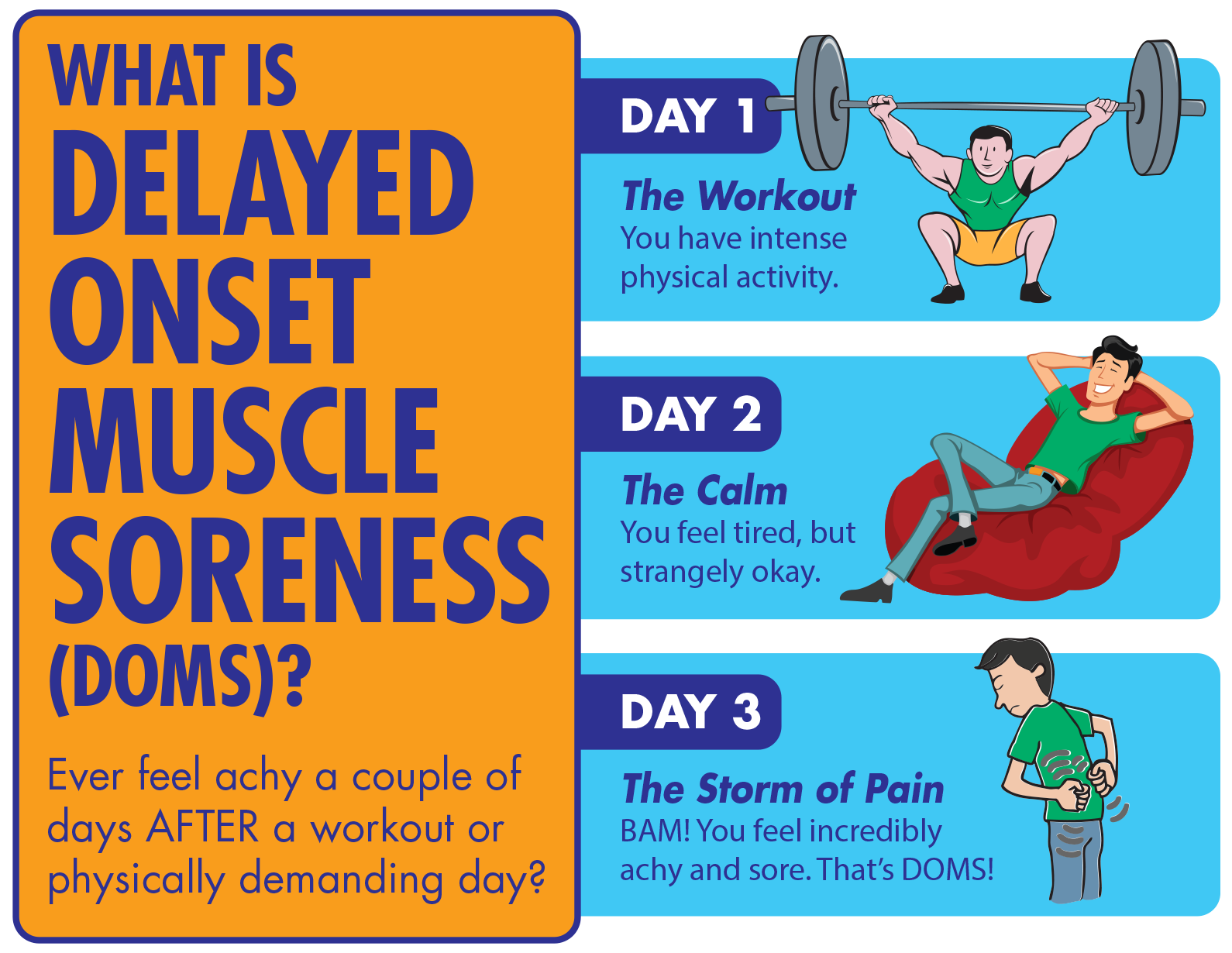DURING FITNESS TESTING YOU MIGHT
EXPERIENCE:
DOMS – Delayed Onset Muscle Soreness
Delayed onset muscle soreness (DOMS) describes a phenomenon of muscle pain, muscle soreness or muscle stiffness that is felt 12-48 hours after exercise, particularly at the beginning of a new an exercise program, after a change in sports activities, or after a dramatic increase in the duration or intensity of exercise.
Delayed Onset Muscle Soreness – Causes
Delayed onset muscle soreness is thought to be a result of microscopic tearing of the muscle fibers. The amount of tearing (and soreness) depends on how hard and how long you exercise and what type of exercise you do. Any movement you aren’t used to can lead to DOMS, but eccentric muscle contractions (movements that cause muscle to forcefully contract while it lengthens) seem to cause the most soreness.
Delayed onset muscle soreness is thought to be a result of microscopic tearing of the muscle fibers. The amount of tearing (and soreness) depends on how hard and how long you exercise and what type of exercise you do. Any movement you aren’t used to can lead to DOMS, but eccentric muscle contractions (movements that cause muscle to forcefully contract while it lengthens) seem to cause the most soreness.

Examples of eccentric muscle contractions include going down stairs, running downhill, lowering weights and the downward motion of squats and push-ups. In addition to small muscle tears there can be associated swelling in a muscle which may contribute to soreness.
Treatment
DOMS disappears in about 72 hours after appearing. If treatment is desired, any measure that increases blood flow to the muscle, such as low-intensity work, massage, hot baths, or a sauna visit may help somewhat.
Counter intuitively, continued exercise may temporarily suppress DOMS. Exercise increases pain thresholds and pain tolerance. This effect, called exercise-induced analgesia, is known to occur in endurance training (running, cycling, swimming), but little is known about whether it also occurs in resistance training. There are claims in the literature that exercising sore muscles appears to be the best way to reduce or eliminate the soreness, but this has not yet been systematically investigated.

No comments:
Post a Comment